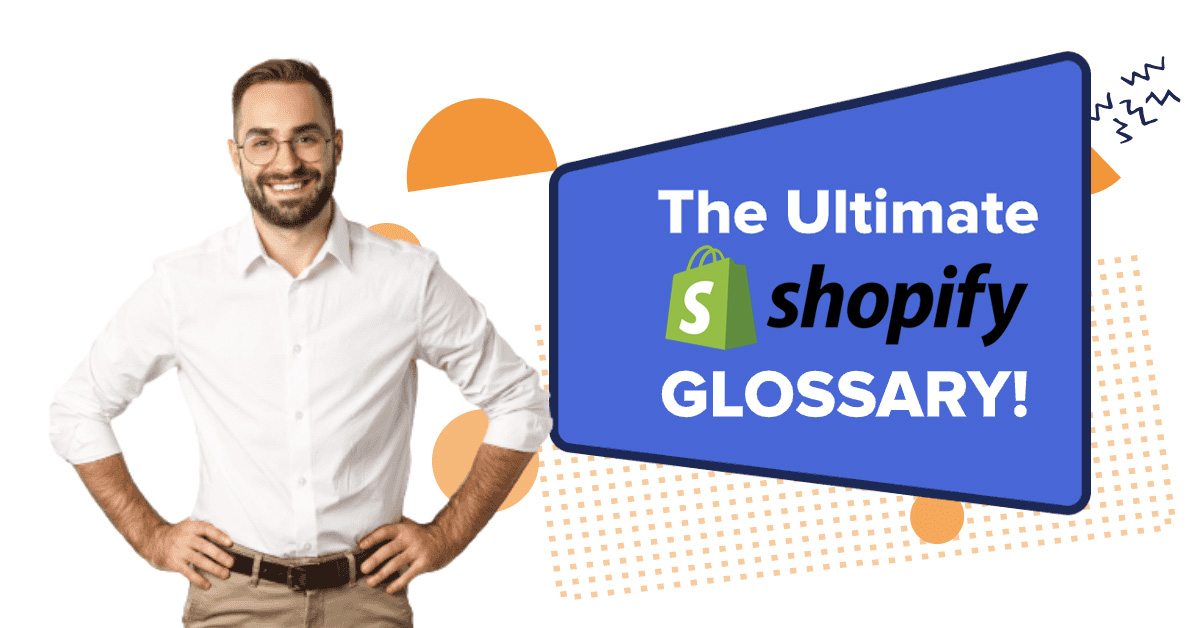Post Views: 5194
Table of Contents:
- Introduction
- A-Z Shopify Glossary
- Conclusion
Introduction
New Shopify users must learn the ecommerce vocabulary associated with Shopify and ecommerce to navigate the interface effectively. Enhance your Shopify experience with comprehensive language insights! As you step into the world of Shopify and e-commerce, understanding technical terminologies becomes crucial. However, navigating this landscape can be challenging for new users.Boost your online presence today using AI. Request a Quote
Shopify Glossary:
A A/B Testing: A/B testing, also known as split testing, is a method for comparing two versions of a website or app to determine which one performs better. For example, it allows designers to evaluate the effectiveness of different subject lines on target customers. Abandoned Cart Email: This feature sends an email to customers who have added items to their cart but have not completed the checkout process. Shopify’s abandoned cart email is an effective tool for re-engaging and converting lost customers. Each year, more than $4.6 trillion worth of merchandise is left in online carts globally. AJAX Cart: An application that enables customers to add products to their cart while staying on the same page, eliminating the need for multiple reloads. This seamless shopping experience allows customers to select products via the AJAX cart without interruption. App: A software or plugin designed to enhance the functions and features of a platform. On Shopify, apps can be integrated to extend capabilities. The Shopify App Store offers a range of free and paid apps, developed by Shopify or Shopify Plus Partners, to meet various business needs. Admin Panel: A software interface that simplifies the management of orders, products, and customers from the back-end. The Shopify admin panel provides access to all your store’s settings and configurations, enabling smooth and efficient business management through an easy-to-use dashboard. B Blog: A journal or a publication called a blog post that is regularly updated and organized. You can leave your comments below. Shopify offers many blogs like Shopify UX blog and ecommerce blog. Shopify merchants can boost their SEO and promote their products by adding a blog to their online store. Buy Button: With Shopify, merchants can add a buy button to their site, blog, or promotional emails. The Shopify buy button feature enables customers with a one-click checkout on the product page. C Cart Page, Checkout: The page with a summary of customer orders. Customers see the cart page before the procedure to the checkout page. A part of the Shopify store that allows merchants to accept orders and take payments. Customers can purchase an item and pay securely with the Shopify checkout feature. Carrier: A third-party logistics firm like FedEx, UPS, DHL, etc. Use Shopify Fulfillment Network to connect with a third-party fulfillment company. Collection: A collection means grouping your product together into categories. Customers can easily discover the products using the collection feature. For example, shoes and sandals are categories for a footwear store. Conversion Rate: The conversion rate records the percentage of users who have completed the desired action. Calculate the conversion rate by diving the total number of converted users with the overall audience. The average conversion rate for Shopify was 1.8% in February 2022. Cookie: A cookie is a small file saved on a user’s desktop or mobile for storing small pieces of data. The data includes users’ interactions with a website. Cookies can be used for functions like tracking a user’s behavior on your site. Cascading Style Sheets (CSS): Font size, style, color, width, height, border, alignment, etc., the rules that define the style of elements in CSS. Create or customize a Shopify website template using CSS. PROS Shopify experts deliver custom templates for your ecommerce platform. Call to Action (CTA): An instruction in the form of a shape, button or text, or even an image that encourages visitors to perform an action. CTAs can be included on emails, social media platforms, and websites. D Dashboard: Shopify dashboard offers all app configurations and settings. It displays key metrics and gives insight into the performance of your online store. Dropshipping: Dropshipping is an order fulfillment method that does not require a business to keep items in stock. The business sells the item and then forwards the sales order to a third-party supplier, who sends the purchase to the buyer. E Ecommerce: What ecommerce means? Buying and selling goods and services on the world wide web is called ecommerce. For example, ecommerce university guides by Shopify are the perfect source for new entrepreneurs. There are different types of ecommerce models. Email Template: A pre-formatted email that you can use to quickly write and create emails by replacing the content with your own. F Front-End Developer: Experts who develop functional user experience on the web using CSS, HTML, and Javascript. Fulfillment: The part of your ecommerce business that involves operations after receiving an order is known as ecommerce fulfillment. It is also applied to third-party firms that store your products and ship orders on the behalf of your ecommerce platform. H Hypertext Markup Language (HTML): HTML is a set of markup codes that informs a browser how to show effects on a web page. For example, effects like font, color, graphics, hyperlinks, etc. Home Page: The first page of your website that customers visit. It helps you build trust among the customers and convert them into buyers.Boost your online presence today using AI. Request a Quote
I
Inventory: The complete list of product variants in a store. Each variant’s SKU, barcode, tracking data, quantity, and stocking locations are listed.
Integration: Shopify can be combined with your existing ecommerce platforms or third-party apps. Shopify integration services and tools help streamline key business processes like shipping, marketing, customer support, etc.
J
JavaScript: A text-based programming language that allows you to make websites interactive. It can be used to achieve effects like dropdown menus and sending requests to the server without page reloading.
L
Landing Page: A landing page is a standalone web page created for a marketing or advertising campaign. For example, PROS Shopify Support & Maintenance landing page.
Line Item Property: Customization data for an item added to the cart is collected using line item properties. This data can be collected from the customer on the product page.
M
Mobile Version: It’s another version of a website optimized for use on smartphones and other mobile devices. Mobile versions have different URLs and you can provide the option of switching to a mobile version.
Migration: Successful move or transition from one ecommerce platform to another. Migrate to Shopify or Shopify Plus from Magento, WordPress, and others.
N
Navigation: The menu bar on a website that displays links to various pages.
O
Open-source Software: Open-source software like Shopify or Magento is software that has the source code available for anyone to inspect, customize, and enhance.
P
Payment Gateway: A payment gateway is a technology that allows sellers to accept debit or credit card payments from buyers.
PHP (Hypertext Preprocessor): PHP is a back-end scripting language used to create functional and dynamic websites.
Product Page & Type: A product page is a web page that helps visitors decide what to purchase. You should include high-quality images, clear pricing, CTAs, etc. on your product page. An identifier useful to assign your options to a specific type of product is known as product type.
R
Responsive Design: A method of creating a graphic user interface (GUI) used to create content that adjusts smoothly to different screen sizes. Responsive designs can adapt to the size and habits of the users.
S
Sales Channels: Places where merchants sell their items including their websites like eBay, Amazon. Also, social media platforms like Facebook, Instagram, etc. Link your ecommerce with Amazon to increase sales.
Search Engine Optimization (SEO): The process of acquiring traffic from search engine results pages that are organic or paid. Search engines like Google, Bing.
Shopping Cart Abandonment: When a potential customer begins the checkout process for an online order but abandons it before completing the purchase. 80 percent of online shopping orders were abandoned in March 2021.
Software as a service (SaaS): It is a way of delivering apps as a service over the internet. Shopify is a SaaS solution with apps made for it by Shopify Partners.
Storefront: The side of the store that is visible to the customers.
T
Tag: Tags help you organize your products. When the page loads, tags allow you to assign product options with a certain tag in Shopify.
Theme: A website template that can be customized to change the design of your online store. A Shopify theme includes Liquid, images, CSS, HTML, etc. You can use a Shopify theme detector app or a Shopify theme icon.
U
Unsubscribe: To remove an individual from a company’s email database and stop receiving any promotional content.
User Interface (UI): The way in which tasks are completed on a website, app, device, or other computing system is referred to as the user interface. Buttons, fields, icons, menus, etc. that users interact with enhances the customer experience.
User Experience (UX): Refers to how customers interact with a website, app, or device. This involves the design, development, and integration of products including aspects like function, usability, and branding.
V
Variants: Various types of the same product. It includes units of measurements, different colors, etc.
Vendor: An identifier useful to assign an option to all of the products from a single supplier.
X
XML: A text-based markup language for defining configuration in a way that an app can understand.
W
Wishlists: Collections of desired products saved by buyers to their user accounts with intent for a future purchase.
Boost your online presence today using AI. Request a Quote
Conclusion
Shopify has its own language, values, and systems. Understanding the basics allows Shopify users to conduct business with trust and transparency. This Shopify Glossary is for every new Shopify user. Shopify experts are reliable resources to help you with your language and fluency. Contact us for more information on Shopify integration services.Deepak Wadhwani has over 20 years experience in software/wireless technologies. He has worked with Fortune 500 companies including Intuit, ESRI, Qualcomm, Sprint, Verizon, Vodafone, Nortel, Microsoft and Oracle in over 60 countries. Deepak has worked on Internet marketing projects in San Diego, Los Angeles, Orange Country, Denver, Nashville, Kansas City, New York, San Francisco and Huntsville. Deepak has been a founder of technology Startups for one of the first Cityguides, yellow pages online and web based enterprise solutions. He is an internet marketing and technology expert & co-founder for a San Diego Internet marketing company.



